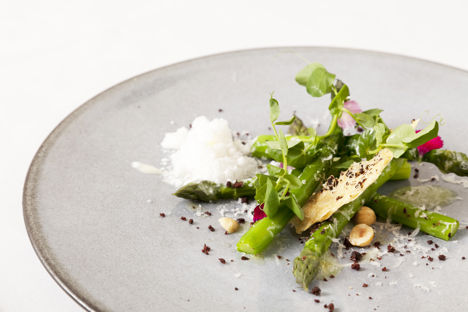Xanthan gum is a magic ingredient used to emulsify and thicken dressings, as well as binding together gluten-free flours. It was first developed in the 1950s — grown from fermented plant bacteria— and has broad commercial use, as well as being a key ingredient in molecular cooking and gluten-free cookery.
It is a white and odourless powder, with similar sized granules and texture to cornflour. It means that xanthan gum's presence often goes unnoticed. It is often added to commercial dressings, vinaigrettes and ketchups to stop them from splitting on supermarket shelves. It's also added to ice creams, as xanthan gum slows the formation of crystals during the freezing process, ensuring that the end product has a smooth and creamy mouth feel.
Xanthan gum became more prevalent in restaurant kitchens as molecular gastronomy grew in popularity. Just the smallest amount is enough to stabilise a foam, gel or emulsion. The main reason that xanthan gum is now creeping into home kitchens too is the rise in gluten-free baking. When white flour is substituted with a gluten-free alternative, then it relies on the addition of xanthan gum to bind together the ingredients. Otherwise cooks will end up with brittle crumbs, rather than the sponge or loaf intended.
Xanthan gum used to be considered something of a specialist ingredient, but as supermarket gluten-free ranges are growing, it's becoming more and more widely-available. Look in health food shops, or baking aisles in big supermarkets, as well as specialist chef websites.
How to cook with xanthan gum
High-accuracy weighing scales and a chemistry spatula are both good ideas when cooking with xanthan gum, as most molecular recipes require very small, specific amounts — anything from 0.5 to 5 per cent by weight. Xanthan gum will thicken and emulsify both hot and cold sauces, which can be reheated after a single use. When using it to make gluten-free dough, then the xanthan gum is usually added to the flour at the dry ingredient-stage.
The taste of xanthan gum in undetectable. But texturally, it can be used to bind anything from a parsley sauceto a sabayon or a sorrel and cucumber juice.
Chefs also use it to thicken sauces, improve the texture of ice creams, and also for gluten-free cookery.
Get in touch
Please sign in or register to send a comment to Great British Chefs.

